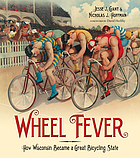
As more people move into already crowded cities, traffic congestion and gridlock become commonplace. Though the situation has improved in the last several years, the number of cyclists killed or seriously injured from crashes with automobiles is unacceptable. Yvonne Bambrick’s The Urban Cycling Survival Guide offers both novice and experienced cyclists, as well as automobile drivers, tips on sharing the roadway to make it safer and more convenient for all concerned. An urban cyclist himself, Jeff Mapes is on the leading edge with Pedaling Revolution: How Cyclists Are Changing American Cities. This is a broad overview of the battle cyclists face against the automobile culture. John Pucher and Ralph Buehler, in City Cycling, provide a guide to the renaissance of urban cycling as a sustainable urban transportation method. They examine cycling conditions in cities all over the world, from cycle-friendly locations such as Davis, California, and Delft, Netherlands, to megacities like London, Paris, New York, and Tokyo. In the City of Bikes: The Story of the Amsterdam Cyclist, by Pete Jordan, is the touching memoir of an American in Amsterdam who has cycled every inch of the city. His book is a history of cycling there from the 1890s through the Nazi occupation to the present.
Mia Birk offers advice to city planners and sustainable living activists in Joyride: Pedaling toward a Healthier Planet. Elly Blue’s Bikeconomics: How Bicycling Can Save the Economy is a thoughtful analysis of the true costs of cycling. She explores why individuals, businesses, organizations, and cities are investing in cycling. Using his bicycle to travel through cities around the world, Talking Heads co-founder David Byrne observes cultural differences, visual arts, and urban planning in Bicycle Diaries.
Readers learn what the life of a bicycle messenger is all about in Travis Hugh Culley’s The Immortal Class: Bike Messengers and the Cult of Human Power. Culley went to Chicago to pursue his interest in theater and became a bike messenger to make enough money to live. He explores the lives and deaths of messengers in this personal and political memoir, offering insight into an urban subculture. Robert Hurst is another bicycle messenger and the author of The Cyclist’s Manifesto, in which he posits the idea that Americans need to overcome their historic, dismissive attitude toward the bicycle to expand ridership. In addition to improving the nation’s health, it will reduce oil dependence and urban congestion. In One Less Car: Bicycling and the Politics of Automobility, Zach Furness examines how the bicycle became a fringe mode of transportation made obsolete by urban planners and highway engineers. An attempt to reverse this situation is described in Critical Mass: Bicycling’s Defiant Celebration, edited by Chris Carlsson, which details the phenomenon that originated in San Francisco in 1992. Critical Mass represents the organized coincidence of cyclists temporarily reclaiming the streets in over three hundred cities around the world. J. Harry Wray in Pedal Power: The Quiet Rise of the Bicycle in American Public Life is well aware that the bicycle is not a panacea for Earth’s environmental problems; however, he recognizes that the more people bicycle, the more they become connected to the fragility of the ecosystem. Luis A. Vivanco’s Reconsidering the Bicycle: An Anthropological Perspective on a New (Old) Thing is an ethnographic study on the bicycle’s role in urban sustainability.
Since its inception, the bicycle has been a part of urban society. In The Cycling City, Evan Friss examines its place in the 1890s American city, where men and women rode for transportation, exercise, and leisure. Lorenz Finison concentrated in Boston’s Cycling Craze not only on the late-nineteenth-century cycling experience in Beantown, but more importantly on the early debates relative to class, gender, race, and cycling. To do so, he follows the cycling career of African American female racer Kittie Knox. Noting that it was not unique to the urban environment, Jesse Gant and Nicolas Hoffman discuss how nineteenth-century bicycling was largely limited to white males in Wheel Fever: How Wisconsin Became a Great Bicycling State. Issues of race, class, and displacement continue in today’s society, as demonstrated by Melody L. Hoffman in Bike Lanes Are White Lanes.
 Pedaling revolution: how cyclists are changing American cities
by
Pedaling revolution: how cyclists are changing American cities
by
 Boston's cycling craze, 1880 - 1900: a story of race, sport, and society
by
Boston's cycling craze, 1880 - 1900: a story of race, sport, and society
by
 Wheel fever: how Wisconsin became a great bicycling state
by
Wheel fever: how Wisconsin became a great bicycling state
by